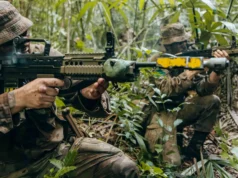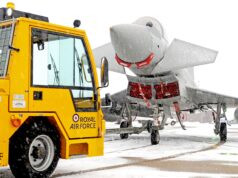The British presence in Kenya is essential to improve the capabilities of the British Forces in arid terrain and for future deployments in similar environments.
Since Kenya obtained independence in December 1963 from the UK, both countries maintained close diplomatic relations and military links despite some cold periods due to diplomatic disputes. Proves of good relations are easy to note when analysing with more care such links between London and Nairobi.
Kenya is a long-standing member of the Commonwealth of Nations and has an enduring Defence Cooperation Agreement with the British Government that allows the presence of British troops on Kenyan soil mainly for training purposes. This agreement reflects a military collaboration between the two nations that is roughly 40-year long and has not yet shown signals that are coming to an end in the short run.
The nature of the British presence in Kenya is focused on training troops in preparation for operations in other places with similar terrain and climate, such as parts of Afghanistan and Iraq. This presence is through the British Army Training Unit Kenya (BATUK) that is a permanent training support unit which is stationed mainly in Nanyuki, roughly 200 km north of Kenya’s capital Nairobi, with a small detachment base in Kahawa. The Army declares that the Training Unit Kenya provides logistic support to troops that arrive throughout the year and provides “demanding training to exercising units preparing to deploy on operations or assume high readiness tasks”.
According to the Ministry of Defence (MoD), the British agreement with the Government of Kenya includes up to six infantry battalion each year to carry out eight-week training exercises in the rugged and arid Kenyan terrain. These conditions are unavailable in Britain and therefore is a unique possibility for the British Army to train its soldiers for an operation that might require the skills obtained in Kenya.
The exercises occur in two parts; Live Fire and Tactical Effects Simulation (TESEX) which involves “a live enemy”. As explained by the Army, ”the TESEX system identifies when vehicles have been fired at and damaged or destroyed and also informs soldiers when they are being fired at and if hit what injuries they have sustained”. This sophisticated system improves the quality of training and increases the results obtained.
About 10,000 British troops train in the East-African country every year enhancing the skills of the Armed Forces when dealing with arid environments, vital for the military success of deployments such as Operation Telic, the British military operations in Iraq that started in March 2003, and operations in Afghanistan. Showing the important role that the agreements with Kenya have for the Armed Forces.
The Army also counts on three Royal Engineer Squadron to carry out projects that involve civil engineering and two medical company groups of the Royal Army Medical Corps with the central role to provide health care assistance to the local civilian communities.
Moreover, Britain offers opportunities in British training areas back in the UK to members of Kenya Defence Forces and eventually conducts joint exercises with the Kenyan military. The UK since 2015 is also committed to supporting Kenya’s fight against the terrorist group Al-Shabaab, this commitment includes the deployment of personnel to Somalia with the objective to offer logistical support to the Kenyan Defence Forces and contribution to anti-terrorism training for the police and border guards of Kenya.
Besides the British Army Training Unit, the UK has in the country the British Peace Support Team East Africa (BPSTEA). According to the Army, its main purpose is to coordinate British military assistance to armed forces in Eastern Africa, “to contribute to Security Sector Reform and to increase peacekeeping capacity”.
To make this possible, it is divided into three main parts: the International Mine Action Training Centre (IMATC), the Peace Support Training Centre (PSTC) and “presence in the Kenyan Defence and Staff College (DSC)”. As declared by the Army, the IMATC is since its opening in 2005, “a joint British and Kenyan venture” with the primary purpose to alleviate “the suffering caused by landmines and Explosive Remnants of War by providing high-quality Mine Action Training”.
The IMATC is an excellent chance for mine action training due to the existing facilities that include “the access to local Kenyan training areas and unique position in a neutral and secure location in Africa”. The IMATC is responsible for the first dedicated dog detection centre in East Africa. It is worth of note that the Mine Action Training Centre is humanitarian in nature and welcomes other organisations with a focus in mine-affected regions to utilise its facilities.
Besides its importance for military operations abroad the British presence in Kenya goes beyond the training of troops in the arid areas of the Kenyan countryside. It also supports the Kenyan government in improving the quality of life of regional communities through the British Peace Support Team and the Royal Army Medical Corps, and in the combat of terrorist groups. Therefore, the cooperation between Britain and Kenya shows that is possible to achieve results that strengthens their positions and that are advantageous to the interests of both sides.













Comment:I’d like to serve in the force, how is the procedure pliz?